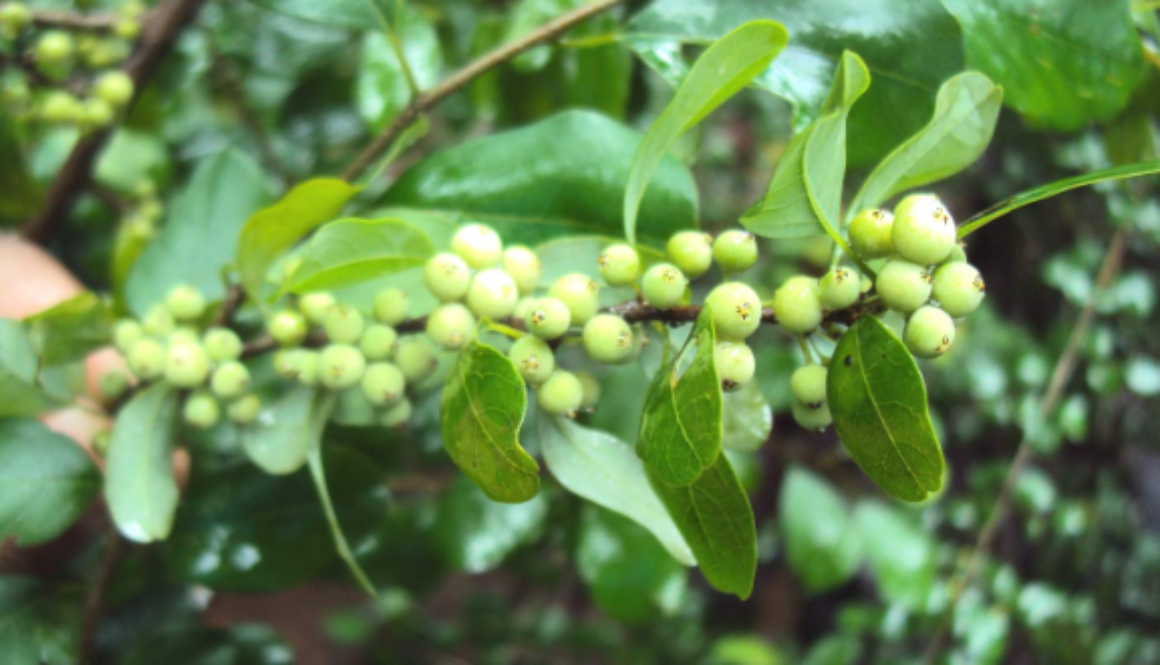Guggul
A much branched woody shrub on open dry hills and other rocky habitats, now also cultivated. Spirally crooked branches have white papery flaking bark. Leaves 1 -3 foliolate, rhomboid, smooth and shining. Flower solitary,
brownish red in colour. Fruit is an ovoid drupe and red in colour. Flowering and fruiting in January to May.
Part used: Stem and Gum resin
Usage: It is a source of Indian bedellium gum- a fragrant gum-resin obtained from stem. In local medicines it is used as an antiseptic on old wounds, as urine stimulant, in the treatment of ulcer and pyorrhea. The drug is also used as expectorant, carminative and demulcent. The smoke from the burning guggul is inhaled to cure bronchial infections. The powder of stem bark is used to cure leucorrhoea. The young branches are also used as tooth brushes. The gum resin is hypolipdaemic, hypocholesterolaemia and anti-rheumatoid arthritis.
Agrotechniques : Propagated through cuttings/seeds. The saplings are planted in pits (50 x 50 x 50cm) filled with local soil and FYM (2: 1). Pre and post plantation irrigation, weeding and 3 to 4 waterings in first two years essential. The oleo gum resin is extracted by making circular incision on at· least 3″ thick stem, during February. The yellow sap that comes out dries up as ‘guggul’ of the trade.

